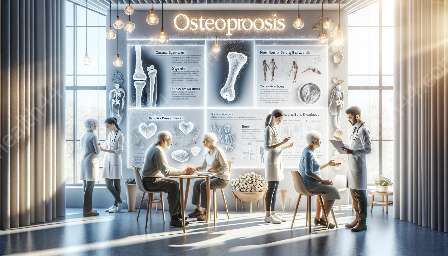Osteoporosis and fractures are interconnected health issues that should not be underestimated. Osteoporosis, in particular, poses a significant threat to bone health and overall well-being. This comprehensive guide explores the causes, symptoms, and prevention strategies for osteoporosis and fractures, shedding light on their impact on overall health.
What is Osteoporosis?
Osteoporosis is a condition characterized by low bone density and deterioration of bone tissue, leading to fragile bones and an increased risk of fractures. With osteoporosis, bones become porous and brittle, making them more susceptible to fractures, even from minor falls or injuries.
Causes of Osteoporosis
The primary cause of osteoporosis is an imbalance between bone formation and bone resorption. Certain risk factors, such as aging, hormonal changes, and inadequate intake of calcium and vitamin D, can contribute to the development of osteoporosis. Additionally, lifestyle factors like smoking, excessive alcohol consumption, and lack of physical activity can also increase the risk of osteoporosis.
Symptoms of Osteoporosis
Osteoporosis is often referred to as a 'silent disease' because it progresses without noticeable symptoms until a fracture occurs. However, as the condition advances, symptoms may include back pain, loss of height over time, stooped posture, and easily fractured bones.
Impact of Osteoporosis on Fracture Risk
Osteoporosis significantly heightens the risk of fractures, particularly in the spine, hips, and wrists. Fractures resulting from osteoporosis can lead to severe pain, disability, and a decreased quality of life. Furthermore, hip fractures, in particular, are associated with increased mortality rates and immense economic burden on healthcare systems.
Prevention and Management of Osteoporosis
Preventing osteoporosis involves adopting a bone-healthy lifestyle, including a well-balanced diet rich in calcium and vitamin D, regular weight-bearing and muscle-strengthening exercises, avoidance of smoking and excessive alcohol, and proactive management of underlying health conditions. For individuals at risk of osteoporosis, medications and hormone therapy may be prescribed by healthcare professionals to help maintain bone density and reduce fracture risk.
Understanding Fractures
Fractures are breaks or cracks in bones that can result from trauma, falls, or underlying medical conditions such as osteoporosis. While fractures can occur in any bone in the body, they are most commonly seen in the hip, spine, and wrist among individuals with osteoporosis.
Consequences of Fractures
Fractures caused by osteoporosis can have profound physical, emotional, and social consequences. They often lead to pain, reduced mobility, decreased independence, and an increased likelihood of hospitalization and long-term care. Furthermore, the fear of falling and sustaining subsequent fractures can have a significant impact on an individual's mental well-being.
Prevention and Treatment of Fractures
Preventing fractures involves addressing the underlying cause, such as osteoporosis, and taking proactive measures to reduce fall risk. This can include home modifications, balance and strength training, proper footwear, and regular vision check-ups. In cases where fractures occur, prompt and appropriate medical intervention, including immobilization, surgery, and rehabilitation, is essential for optimal recovery.
Osteoporosis and Health Conditions
Osteoporosis can be associated with other health conditions, further exacerbating its impact on overall health. For instance, individuals with osteoporosis may also have cardiovascular disease, diabetes, or respiratory conditions, complicating their management and treatment. Furthermore, certain medications used to manage other health conditions can contribute to bone loss, increasing the risk of osteoporosis and fractures.
Conclusion
Understanding the relationship between osteoporosis, fractures, and health conditions is crucial for promoting bone health and overall well-being. By recognizing the risk factors, symptoms, and preventive strategies for osteoporosis and fractures, individuals can take proactive steps to minimize their risk and maintain optimal bone health. Additionally, raising awareness about the impact of osteoporosis on health conditions can facilitate comprehensive care and support for individuals at risk.


